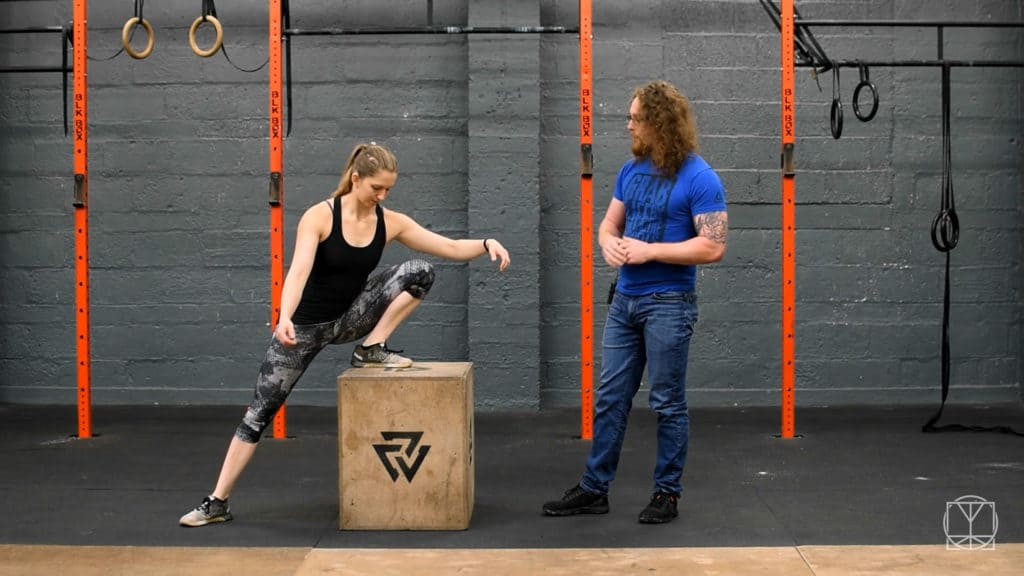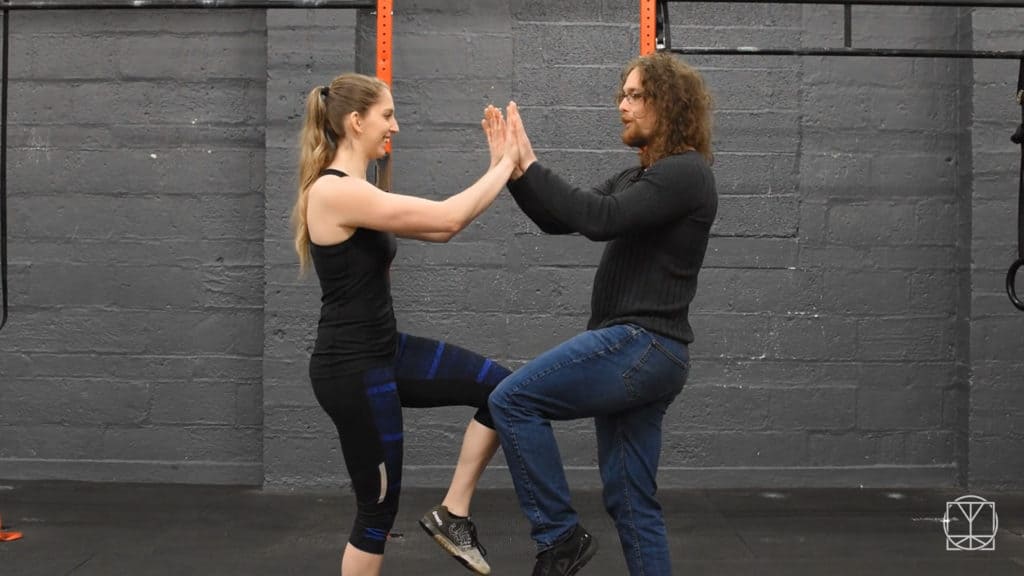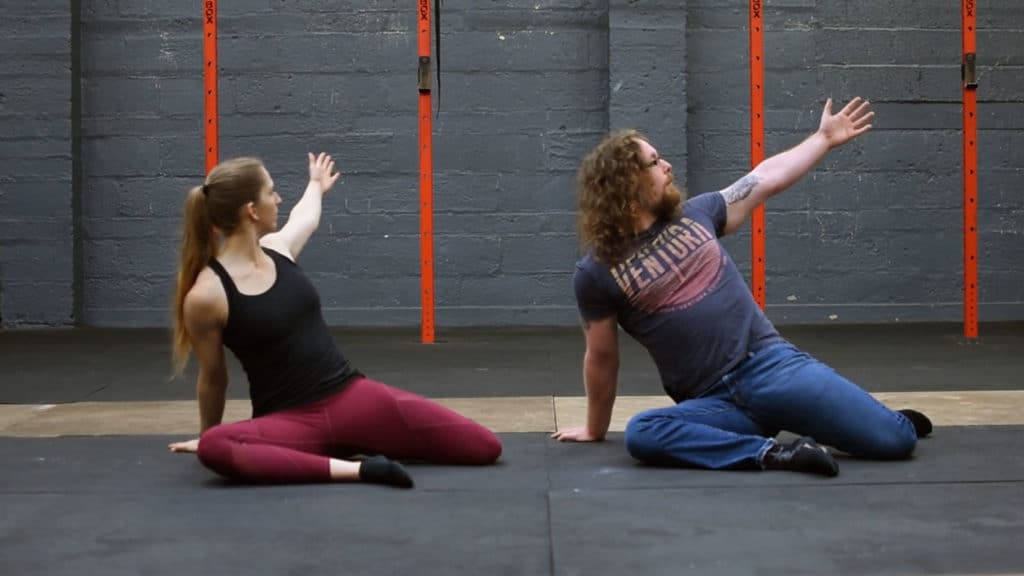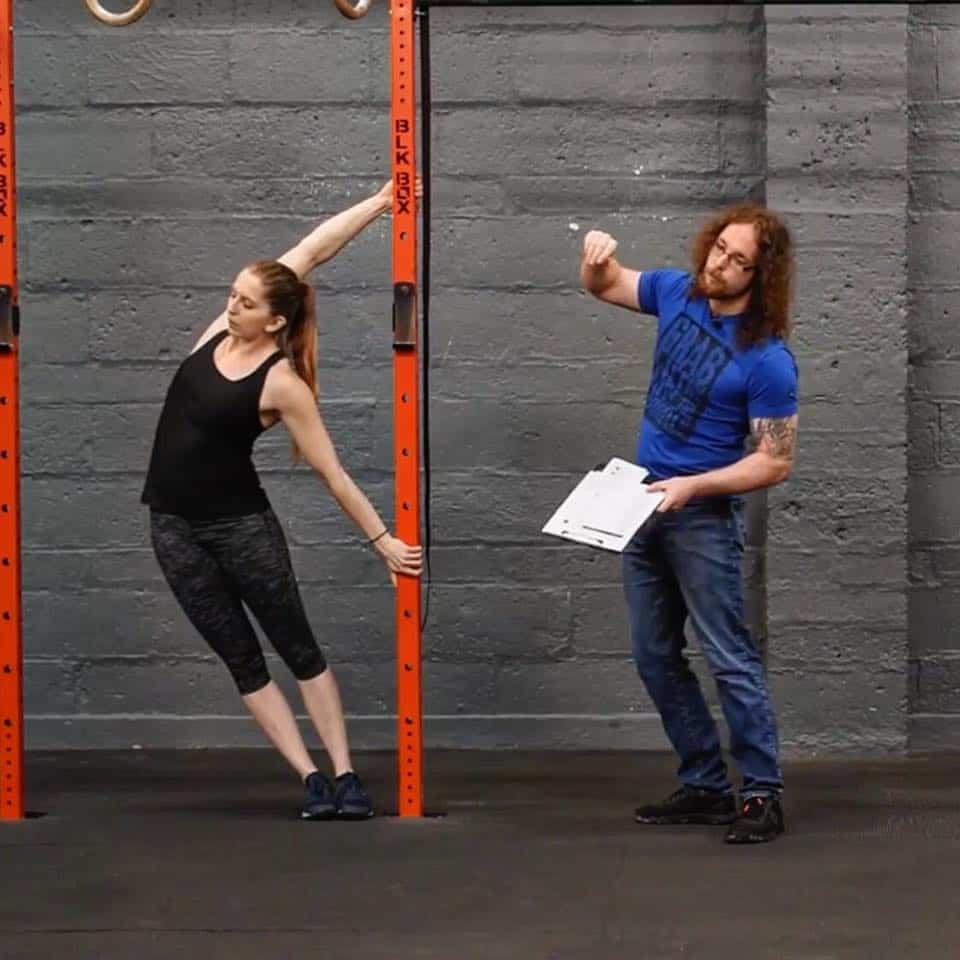There’s nothing worse than just being sore. Like, not even having a good story behind your aches and pains… you’re just… sore. Why? Um… because.
Years ago, I went through a spell of elbow pain with two sore knees to accompany it. Leading up to my back injury I was just getting sore all the time and I chalked it down to “getting old” …. I was maybe 25/26…? ……. that is not old. I don’t even feel old now at the grand age of 29 and 40 months! In fact, I move better and feel better than I ever have in my entire life.
All my old soreness ended after I injured my back. I started learning that to keep my lower back happy I needed good hip mobility, and how my lumbar spine was compensating for my non-existent thoracic mobility. Which leads me to:
SUPER JOINT TIP 1!
The sore bit is rarely the problem.

For example, if you have knee pain look at your hip mobility: if you struggle to sit on the floor or externally and internally rotate your hips (to a degree, you don’t need crazy amounts of movement here) then when you squat and run and lunge etc. your knees will be being pulled more to one side to compensate for your lack of hip movement. The knee is a hinge joint, and generally does not like being repeatedly rotated – think about what would happen if you grabbed the top of your door and started pulling it down against its hinges? Your wife would probably shout at you is what.
The longer this goes on for, the more strain is put on your knee hinges, and they will start to get annoyed. This is how you get young people in their twenties or thirties saying that they have bad knees. Purely by assessing and improving the hips, I have clients in their forties and fifties making complete changes to how their knees move and feel.
Taking a similar approach to my knees, I didn’t start attacking and “smashing” around the elbow, I improved my thoracic mobility. My shoulder rests better and coincidentally, neither it nor my elbow give me problems anymore! I can literally do arms every day (so I don’t have to do leg day) and never have any issues. This isn’t unique to me, I have replicated this so many times for people struggling with golfers elbow and tennis elbow.
Elbows and knees are just hinges, they need working levers and pulleys to feel good – if the inserts for the levers and pulleys are slightly off, the hinge is going to take the wear and tear. Which happens! Sometimes we get ourselves into these unbalanced positions, but it’s not the end of the world. It’s completely reversible! I did loads of bad reps and rubbish squats for years and have been able to get away with it… well, after being forced to change by serious injuries, but hopefully you don’t let it get that far!
But once you have mobility, do you know what to do with it? This leads us to…
SUPER JOINT TIP 2!!
Build stability outside of “correct” form.

People that are methodical about doing everything 100% correctly are stuck in a dangerous box, I was there too and if anything – it just makes you weaker.
Being able to stay strong and safe in unexpected “bad positions” is crucial to injury prevention. I always harp on about reactive core stability which is your body’s ability to cope with unpredictable circumstances and not fall over or crumble – it’s ability to successfully react.
You can simply build this up in your core & lower body with extended periods of single leg balance – the carryover to how you feel strength wise and how you recover seems disproportionality insane when you start to really develop this. Your body learns to cope with minute wobbles, constant corrections, and develops a level of stability you just don’t get from doing things “properly” all the time.
Your shoulders love this too! With so much natural range of motion, your shoulders crave stability. All you need to do is carry things overhead until you are fatigued then get something lighter and keep going! Try deliberately wobbly things too – hold a kettlebell upside down, or a large medicine ball, anything that challenges your shoulder is beneficial.
If you want your body to be able to cope with the major stresses of heavy lifts, you must prepare your stabilising muscles so they’re smart enough to work under that extra strain. You can get a bit ridiculous with it… like doing single arm push ups on Bosu Balls with dumbbells and bands attached to every limb… and to be honest I used to laugh when I saw stuff like this, but after messing about with friends in gyms and trying some of the ridiculous things we see online, I realised that the strongest people never struggled with the silliness. Even in some of my ridiculous videos that, yes, are for grabbing attention, I am still basically challenging my stability to build better joints!
Make yourself wobble and get your body to figure it out. You can only control so much and without the ability to react instinctively – you are weak.
Lastly,
SUPER JOINT TIP 3!!!
You don’t always gotta go 100% all the time.

When is the last time you went to the gym and just moved all your joints through their full ranges (relative to you) and rolled about the floor for a bit and did some joint circles?
I am not saying this needs to become a life changing training thing and you need to do it all the time every training session, but the benefits to doing this at least once a week for how your joints feel and your overall recovery are too good to miss out on!
One of the main workouts in End Range Training is Banded Core and Movement which is based on high rep resistance exercises and moving while being relaxed. Putting joints in good positions and giving them a low intensity pump! It is a unique session and something I swear by. I’ll always throw a few of the drills from that workout in after a heavy training session because I know the next day, I will feel awesome!
Using all the muscles in a relaxed way at the end of a session is such a good way of avoiding injuries, and is far more effective than doing targeted static stretches and will build much more strength long term.

